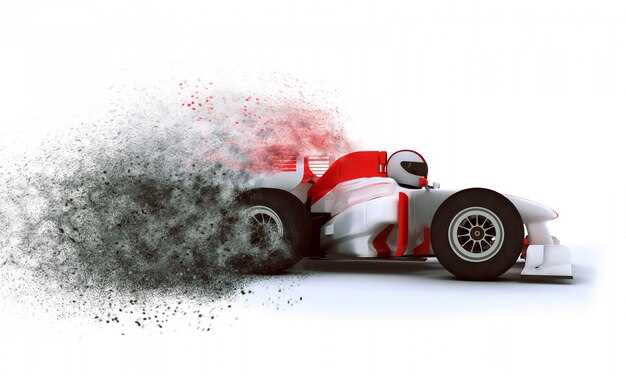

Grassroots motorsports represent a vibrant fusion of passion and community, where enthusiasts come together to celebrate their love for racing in its most authentic form. This subculture revolves around the idea that racing is not just a sport but a way of life, fueling friendships and camaraderie among individuals from diverse backgrounds who share a common goal: the thrill of speed and competition.
The heart of grassroots motorsports beats in local tracks, parking lots, and makeshift circuits, where racers of all skill levels can participate without the barrier of expensive equipment or professional training. This inclusive environment fosters a sense of belonging, allowing both seasoned drivers and newcomers to learn from one another while nurturing their passion for racing. The community aspect is vital, as it transforms individual pursuits into collective experiences, where everyone can contribute to the excitement and growth of the sport.
Active participation in grassroots motorsports not only sharpens driving skills but also builds lasting relationships. Club events, weekend races, and car meets offer ample opportunities for networking, mentorship, and friendship. In this tight-knit community, shared experiences–whether they be triumphs on the track or challenges faced during repairs–create bonds that extend far beyond the racing scene, making grassroots motorsports a unique epitome of passion and community intertwined.
How to Get Started in Amateur Racing: A Beginner’s Guide

Getting started in amateur racing can be an exhilarating journey filled with excitement, community, and a passion for motorsports. To embark on this adventure, follow these essential steps to ensure a seamless entry into the world of racing.
First, familiarize yourself with the various types of amateur racing, which include karting, autocross, and track days. Researching each category will help you discover which discipline aligns with your interests and goals. Karting is often regarded as the best entry point due to its lower costs and accessibility, while autocross is perfect for those looking to develop their driving skills in a controlled environment.
Next, invest in the necessary safety equipment. A well-fitted racing helmet, fire-resistant suit, gloves, and shoes are fundamental items to protect yourself on the track. Make sure to adhere to the specific safety regulations required by your chosen racing community.
Once equipped with safety gear, consider joining a local motorsports club or community. These organizations serve as invaluable resources, offering guidance, support, and opportunities to connect with seasoned racers. Engaging in community events, meetings, and social gatherings will help you build relationships with fellow enthusiasts, which is essential for sharing knowledge and experiences.
Participating in driving schools or training programs is crucial for honing your skills. Many clubs organize workshops where you can learn the basics of car handling, track techniques, and race strategies. These educational opportunities are crucial for developing a solid foundation and improving your confidence behind the wheel.
Another important step is to find a suitable vehicle for racing. Depending on your chosen discipline, you might opt for a dedicated race car or modify your existing vehicle to meet competition standards. Ensure that your car complies with the regulations of your racing community, as each organization may have different requirements.
Before hitting the track, attend local races as a spectator. Observing experienced racers can provide valuable insights into racecraft and etiquette. Take note of their techniques and strategies, as well as how they interact with the racing community. This firsthand experience will help you feel more comfortable when it’s your turn to compete.
Finally, once you’re ready to race, enter your first event! Start with low-pressure competitions to build your confidence and gradually work your way up to more challenging races. Remember that the journey into amateur racing is as much about personal growth and enjoyment as it is about competition. Embrace the friendships and the community spirit that motorsports foster, and enjoy every lap on your quest to becoming a skilled racer.
Building Local Motorsports Communities: Tips for Organizing Events

Creating a vibrant local motorsports community requires passion, dedication, and effective organization. To foster a sense of community among racing enthusiasts, consider the following tips for successfully organizing events.
1. Identify Your Audience
Understanding who your target audience is essential. Are they local car enthusiasts, amateur racers, or families looking for entertainment? Tailoring your events to the specific interests of these groups will help gather more participants and create an engaging atmosphere.
2. Choose the Right Venue
Select a suitable venue that is easily accessible and has the necessary facilities for the type of racing you want to host. Consider options such as local racetracks, parking lots, or even community parks that can accommodate a variety of motorsport activities.
3. Promote Inclusivity
Encourage participation from diverse groups within the community. Organizing beginner classes or family-oriented events can attract newcomers to the racing scene. A welcoming environment will foster a stronger sense of community and help retain participants.
4. Collaborate with Local Businesses
Partnering with local businesses can enhance your events and promote community involvement. Seek sponsorships from automotive shops, restaurants, and other relevant organizations. These partnerships can provide valuable resources and help raise awareness within the community.
5. Leverage Social Media
Utilize social media platforms to promote your events, share updates, and engage with community members. Creating a dedicated page or group can serve as a hub for information, enabling enthusiasts to connect, share experiences, and stay informed about upcoming racing events.
6. Focus on Safety
Ensuring participant safety should be a priority. Develop clear safety guidelines and procedures for your events, and ensure that all racers and spectators understand them. Proper safety measures will enhance the community’s reputation and encourage growth.
7. Gather Feedback
After each event, seek feedback from participants and attendees. Understanding their experiences, suggestions, and concerns will help improve future events and demonstrate that their opinions matter within the racing community.
By incorporating these strategies, you can effectively build and cultivate a thriving local motorsports community that not only indulges in racing passion but also fosters camaraderie among enthusiasts.
Finding and Joining Racing Clubs: Connecting with Like-Minded Enthusiasts
For amateur racing enthusiasts, joining a racing club is an excellent way to immerse oneself in the motorsports community. Racing clubs provide an environment where individuals can share their passion, gain knowledge, and improve their skills while forming valuable connections with others who have similar interests.
To find a suitable racing club, start by researching local organizations that focus on your specific interest, whether it be road racing, autocross, or karting. Many clubs offer introductory sessions or open-house events that allow prospective members to learn more about their activities and meet current members. Online forums and social media platforms dedicated to motorsports often feature listings of clubs and can serve as a resource for finding like-minded individuals.
Once you’ve identified a few clubs, consider attending a meeting or a practice session. This firsthand experience will provide insights into the club’s culture and the types of events they organize. Engaging with existing members will also help you gauge whether the club aligns with your goals and interests.
Be prepared to participate and contribute to the club’s activities. Most clubs encourage active involvement in events, be it by competing, volunteering, or helping organize. This involvement not only enhances your racing skills but also strengthens bonds with fellow members, fostering a sense of community.
Joining a racing club can also open doors to workshops and training sessions conducted by experienced racers, offering invaluable tips and techniques for aspiring competitors. Additionally, many clubs have access to track days and special events, which can significantly enhance your racing experience.
Ultimately, connecting with a racing club allows you to share your love for racing and build lifelong friendships, making the journey in amateur motorsports even more rewarding.






